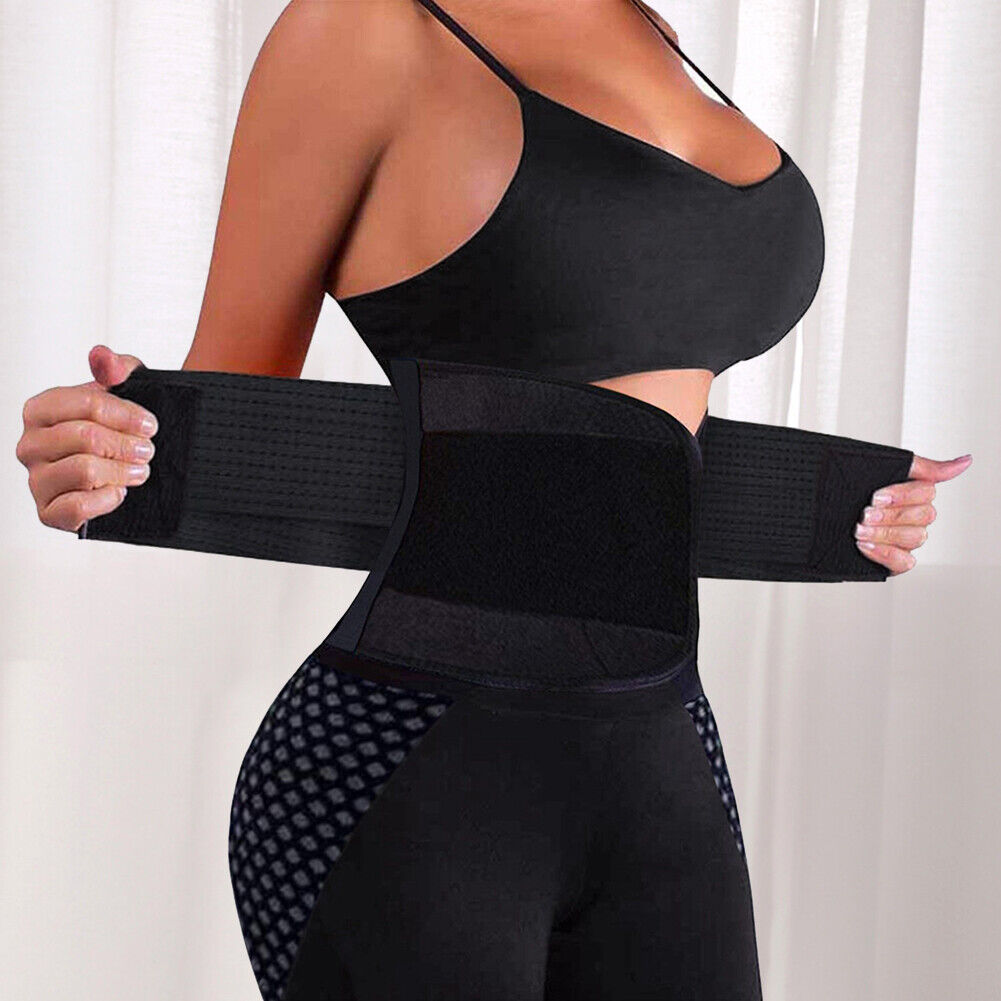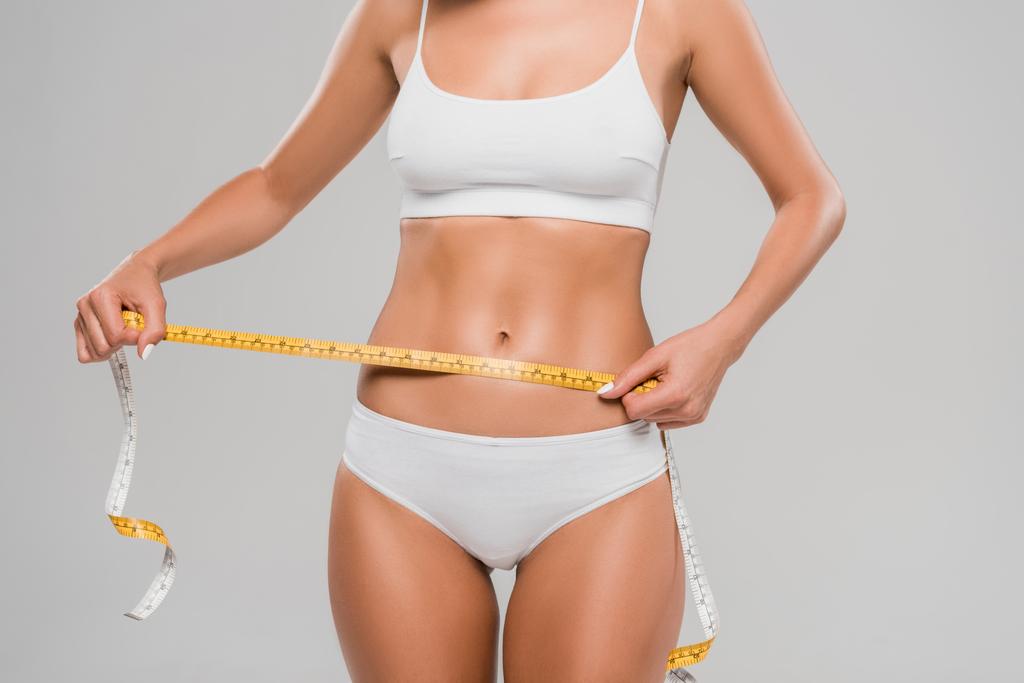Do Slimming Belts Work—The Truth Manufacturers Don’t Want You To Know
- Last Updated: May 15, 2023
Do you feel like your belly always ‘stands out’ and you would like to sort of ‘stand it back’? We feel you, and slimming belts claim to streamline that process. Simply wrap them around your abdomen and lower back, work out for about 15 to 20 minutes and wait for that sculpted and toned figure you’ve been dreaming for.
But the real question is, do they work? Let’s take a closer look at slimming belts and uncover the truth.

What Are Slimming Belts?
Slimming belts, otherwise known as weight-loss belts, waist trainers, or waist trimmers, are worn around the waist and belly. The concept is rather simple—they make you sweat.
When you sweat, you’ll burn extra calories, revealing toned abs and slimmer midsection.
Some slimming belts also adopt EMS (electrical muscle stimulation) or a mild electric charge.
The size of the slimming belt depends on the brand, same goes to the amount of time you should put it on. However, it’s possible to find options that are one-size-fits-all.
One common feature of these tools is that users should combine the use of these belts with regular exercise and healthing eating habits, but not a complete substitute.
Theoretically speaking, slimming belts help increase the temperature around your waist, causing you to sweat more than usual, thus the potential weight loss and reduction in waist circumference.
What Are Slimming Belts Made Of?
Most slimming belts on the market are made of Neoprene—a synthetic rubber typically used in swimwear. It is highly elastic and compresses well under pressure. Other materials used to manufacture slimming belts include nylon and spandex.
Do Slimming Belts Work?
Companies selling slimming belts claim it’s an effective way to tone core muscles. But, whether or not this claim is backed by science, let’s find out.
The results you yield from using slimming belts are accelerated calorie burning, muscle toning, and possibly weight loss. However, most belts rely on increased sweating, with or without a vibration feature, in order to speed up weight loss.
According to Healthline, the more you sweat, the more water weight you lose. Do bear in mind that water-loss and fat-loss are two different phenomena but are often mistaken for the same thing.
Electrical Muscle Stimulation
Referring to NCBI, studies have shown that the use of implanted gastric pacing EMS helps expedite weight loss by ‘training’ the muscles and nerves in our stomach, which manipulates the stomach into feeling that it’s full.
With that being said, even slimming belts with EMS technology can’t stimulate the internal stomach muscles and digestive nerves.
Many manufacturers claim that they’re using effective EMS technology, but clinical research concludes otherwise. These tools aren’t effective weight-loss tools, nor are they contributing to weight or fat reduction, as reported by NCBI.
Albeit these studies, users have experienced temporary results in strengthening, toning, and firming the muscles around their abdominal area. In general, slimming belts promote weight-loss by raising core temperature, which results in increased sweating and water loss, and potentially long-term weight loss when combined with healthy eating habits and an exercise plan.
Who Can Use Slimming Belts for Weight Loss?
The use of slimming belts aren’t solely for individuals planning to lose weight. However, it’s also important to discuss it with a healthcare professional prior to using them.
Though such equipment is marketed to anyone wanting to reduce their waistline, users who’re on a diet and are exercising regularly can, too, benefit from these belts.
What are the Side Effects of Slimming Belts?
Everything has its good and bad. While there are positive results coming from users of slimming belts, there’s always chances for them to experience side effects too. Here are some of the most commonly reported issues caused by slimming belts:
A. Skin Irritation
When slimming belts are worn for a long period of time, they could irritate the skin. Excess sweating and rise in temperature can cause skin irritation and redness.
B. Dehydration
When you sweat with a slimming belt wrapped around your waist, there’s a chance you might experience dehydration due to perspiration. When not properly addressed, it can lead to other health concerns, including dry mouth, fatigue, low urine volume, headache, dry skin, and dizziness.
C. Imbalanced Electrolyte Level
Excessive sweating often causes an imbalance in electrolytes, hence muscle cramps. If you experience this at any point, stop using the slimming belt immediately and consume an electrolyte-containing sports drink or coconut water.
What are the Benefits of Slimming Belts?

On top of shedding water weight, the benefits of slimming belts include:
A. Takes Off Inches After a Pregnancy
Many women resort to slimming belts after giving birth to shape up the belly area. Pregnancy increases lower belly fat and causes the skin to sag, two problems that can be tackled by a slimming belt. They help to compress the lower abdominal area and improve the appearance of post-pregnancy bulge.
B. Corrects Posture
Slimming belts help improve your body posture by offering lumbar support and keeping your spine straight. A good posture helps prevent back- and neck pain. You can also consider a slimming belt should you have a bulging belly or love handles.
C. Rids Your Belly of Lingering Fat
Slimming belts help one shed that last bit of belly fat when combined with a healthy diet and strict exercise plan.
D. Tones & Sculpts the Body
If you yearn to have that Hollywood inspired hourglass figure, slimming belts can make that dream a reality. They cinch your waist, leaving the bust and hips area. Over time, this creates an illusion of an hourglass figure. However, it’s important not to cinch your waist too tight or you might bruise your skin or even damage your internal organs. You should be able to breathe normally and comfortably when you have a slimming belt on.
How to Use Slimming Belts?
To make the most of your slimming belt, you must know how to wear it right. Here’s a step-by-step guide.
Step 1-Stand straight.
Step 2-Breathe normally. Avoid breathing too hard to make your stomach overly tight or leaving it overly loose.
Step 3-Wrap the belt around your waist. Now, you should be able to breathe as you normally would but not restricted. The belt should also be in direct contact with your skin. Ensure not to wrap it around your clothes or any other material unless there’s an instruction that says otherwise. It’s also important not to cinch it too tight to prevent skin bruising.
Final Verdict: Do Slimming Belts Work?
Slimming belts do work wonders in taking off inches away from your waist and belly. You may notice a one to two inch reduction in your waist circumference. However, this effect isn’t permanent, neither will you lose fat. Do bear in mind that they are also not medically approved, and there’s no research to back their weight loss claims.
But you can definitely incorporate them into your weight loss plan, by combining it with a nutritious, balanced diet and regular workouts.

Celine So
Be mindful of your words as they are impactful, which also explains why I am so fond of writing.


